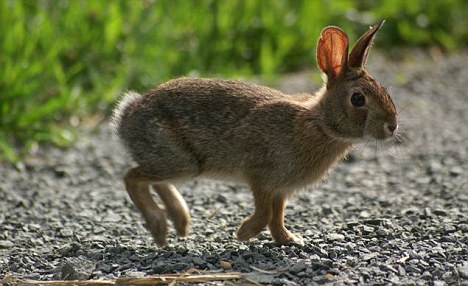When the cottontail rabbit season opens on Nov. 6, some hunters might find bagging a couple a little tougher than in years before. The rabbit population was down a little in many parts of Ohio last year, for whatever reason, and road kills seem scarcer, too.
Those who hunt with hard-working little beagle dogs won’t have a problem, since if there’s a bunny around, they’ll find it. And gunners who hunt the traditional way, lining six to eight men across the edge of a field or brushy area and walking through are going to find some, too, if they walk long enough.
But many hunts this fall will be short jaunts, a couple of hours after work alone or with a friend, or a Saturday morning foray with necessary shopping or “honey do” chores scheduled. These won’t have a minute to spare, and can’t afford to waste time where rabbits aren’t, rather than where they are. Such hunters can save a lot of pointless walking if they pay attention to weather and plan their hunts with weather in mind.
The crucial point is a simple one: cottontails come out after dark each night, forage and roam around, then before dawn they’ll move into their daytime lay-up spots and snooze or loaf the time away until dark next night. So, you pay close attention to what the night before was like, weather-wise.
There are often warm periods in November with nights in the 50s or even 60s. When those occur, rabbits are likely to hole up almost in the open where they can enjoy the sun and plenty of fresh air.
A couple of years I came across such a night and next morning spent some time in an apple orchard. There was fruit on the ground that the animals had been nibbling, and they’d stayed close. I spent my time walking on low mown grass, and checking out occasional clumps of taller vegetation.
The vegetation turned up two cottontails that had no place to run other than over 3-inch high grass. Easy pickings. Back in youthful days in southern Ohio I hunted hillsides and in such balmy weather often found them in little greenbrier thickets or thin grass fields. Again, easy pickings.
In ordinary late fall weather with nights in the high 40s or low 50s, they’ll be exactly where you’d expect them to be, sitting in those lovely weed fields of grass, Queen Anne’s lace, goldenrod and aster. Such fields have enough cover to keep off any wind, but are open enough that they can see danger coming. They’re tough to hunt for a single guy or a pair, since cottontails often jump well ahead and all a hunter sees is grass shaking momentarily.
But those who have three or more careful veterans hunting, and maybe an old-timer along who doesn’t like to walk too long, can place that oldster at the end and edge of such a field while the pair walk through again and again about 20 feet apart. Rabbits typically run to the end of such a field then circle, and the oldster is right there to greet them.
They favor brushy areas in such weather too, places where there’s grass and briers, clumps of hawthorne and sumac. These are easier to hunt since while the cover can be heavy, it’s generally more open. Pick out places where a rabbit might be hiding and place a partner at the other end waiting for a shot or walk through alone and try to make your hike where the bunny will be forced to cover some open terrain.
Rain’s a little tougher. Rabbits don’t like to be wet any more than you do, and while they’re forced to endure rain when feeding at night, as soon as their bellies are full, they’re going to seek someplace that’s dry. Some hunters steadfastly hunt the places where they found game before, those open fields of tall cover particularly. But such will be mostly wasting their time. Would you sit out there all day, wet and shivering?
Good spots to check at such times, if you’re determined to hunt in the rain or its immediate aftermath, is old farm machinery and small abandoned outbuildings. They can sleep underneath a broken down wagon or whatever in fair comfort.
Thick brushpiles are a choice too, and while bottom lands aren’t going to produce much, I once bagged two cottontails from a wooded hillside that had good drainage. One was nestled in a pocket of thick leaves, another under the trunk of a fallen tree, and the third squirted out of a downed hollow log when I kicked it. The hole wasn’t a large one, and I was so surprised when it jumped that I missed it with both barrels.
It sums up to checking the night before and asking “Where would I be today if I were a rabbit?” Then hunt your answer.
(Resource from:http://www.bucyrustelegraphforum.com)
